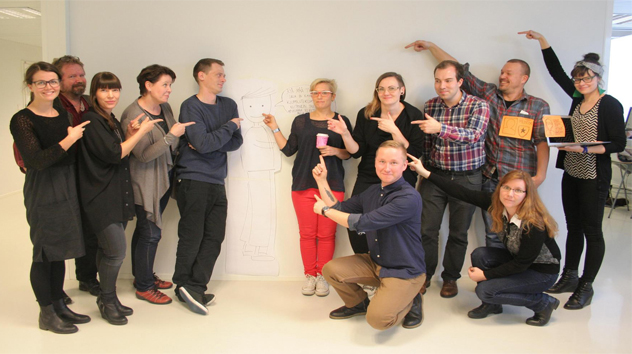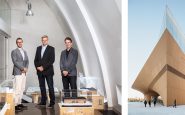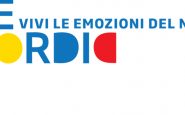« Indietro
City Design experts a Lahti
Il 11/03/2015
Lo scorso mese di Febbraio, alla Lahti University of Applied Sciences, si sono laureati un gruppo di esperti in City Design. Dopo la nomina di Helsinki a Capitale Mondiale del Design ( WDCH 2012) la Finlandia continua ad incentivare qualsiasi iniziativa, nel settore pubblico e privato, che consideri il design come uno strumento utile per migliorare le città in cui viviamo.
The City Design programme aims to boost understanding on how city services and functions can benefit from design know-how. The educational programme placed emphasis on how design thinking can be enhanced and on skills for integrating design methods into public sector initiatives. The studies also dived into service design and other design methods.
City of Espoo to put examples into action
City of Espoo's Communications Manager Hanna Saaristo and Business Architect Piia Wollsten took part in the further education programme. The experience strengthened their understanding on the possibilities of design in city development.
"The city's mission is to produce services for citizens. It is all the more important to establish customer and citizen-derived thinking in cities. Service design thinking has a lot to offer", Hanna Saaristo and Piia Wollsten state.
Both Saaristo and Wollsten already had experience in service design and in procuring design services through their own work. "I have seen a few times how service designers work, and wanted to understand this process better", says Wollsten.
As a part of their studies, Wollsten and Saaristo developed an electronic peephole through which the user can inspect good design practices in cities. The starting point for the study project was that the benefits of design are not very well known in cities. Initiatives aiming at a better customer orientation need visibility. The upcoming electronic service presents examples and practices in a way that is understandable to those not yet familiar with design.
Wollsten and Saaristo's model on explaining design practices is now looking for a foothold in Espoo. "We believe that adding design know-how brings the public sector and the design field closer to one another. It is important that also designers learn enough about the realities of public sector organisations. This type of bridging takes time, often between 1–3 years", Hanna Saaristo and Piia Wollsten reflect.
Info by:
http://www.toimivakaupunki.fi/en
The City Design programme aims to boost understanding on how city services and functions can benefit from design know-how. The educational programme placed emphasis on how design thinking can be enhanced and on skills for integrating design methods into public sector initiatives. The studies also dived into service design and other design methods.
City of Espoo to put examples into action
City of Espoo's Communications Manager Hanna Saaristo and Business Architect Piia Wollsten took part in the further education programme. The experience strengthened their understanding on the possibilities of design in city development.
"The city's mission is to produce services for citizens. It is all the more important to establish customer and citizen-derived thinking in cities. Service design thinking has a lot to offer", Hanna Saaristo and Piia Wollsten state.
Both Saaristo and Wollsten already had experience in service design and in procuring design services through their own work. "I have seen a few times how service designers work, and wanted to understand this process better", says Wollsten.
As a part of their studies, Wollsten and Saaristo developed an electronic peephole through which the user can inspect good design practices in cities. The starting point for the study project was that the benefits of design are not very well known in cities. Initiatives aiming at a better customer orientation need visibility. The upcoming electronic service presents examples and practices in a way that is understandable to those not yet familiar with design.
Wollsten and Saaristo's model on explaining design practices is now looking for a foothold in Espoo. "We believe that adding design know-how brings the public sector and the design field closer to one another. It is important that also designers learn enough about the realities of public sector organisations. This type of bridging takes time, often between 1–3 years", Hanna Saaristo and Piia Wollsten reflect.
Info by:
http://www.toimivakaupunki.fi/en




